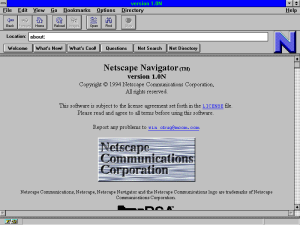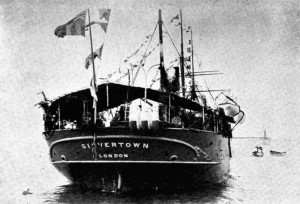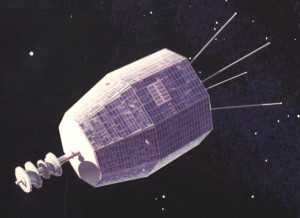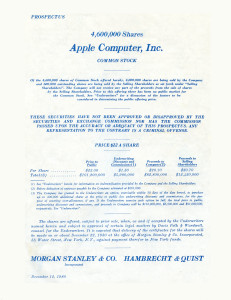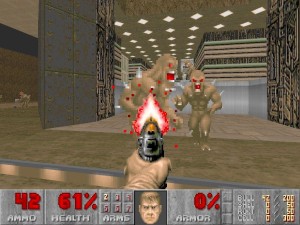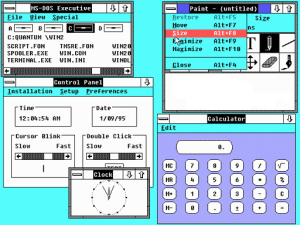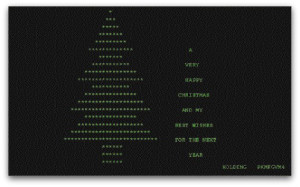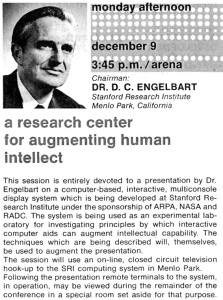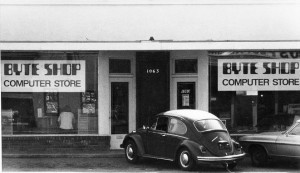Archive for 2023
Netscape 1.0 Released
Netscape Communications Corporation releases Netscape Navigator 1.0, the world’s first commercially developed web browser, although this particular version was free for non-commercial use.
The First Transpacific Telegraph Cable
The cable ship Silvertown begins laying the first Transpacific telegraph cable from San Francisco, destined for Honolulu, Hawaii. After laying 2,238 nautical miles of cable, the Silvertown will land in Honolulu on December 26th. On January 1, 1903 the connection between Hawaii and San Francisco was established. Public messages will begin transmitting on January 5.
Relay I Launched
NASA launches the active repeater communication satellite Relay I from Cape Canaveral. One of the earliest communication satellites to be launched, Relay I’s mission was primarily experimental, but it nonetheless was used for some notable events. On November 22, 1963 Relay I was the first satellite to broadcast television from the United States to Japan, which happened to be the announcement of the assassination of John F. Kennedy. It was then used in August of 1964 to broadcast the 1964 Summer Olympics from Japan to Europe and the United States, relaying the signal with another satellite, Syncom 3. It was the first time two satellites were used in tandem for a television broadcast. Relay I was used until February 10, 1965, when a problem with its power system caused the satellite to become non-functional.
Apple’s IPO Makes Forrest Gump Rich
Apple Computer holds their initial public offering, selling 4.6 million shares at $22 per share and turning more than 40 Apple employees and investors into instant millionaires. With the stock value closing at $29, the market capitalization puts the company’s worth at $1.778 billion. Stock held by Steve Jobs is worth $217 million, Steve Wozniak $116 million, and Mike Markkula $203 million. This was the largest IPO in the US since the Ford Motor Company in 1956. Oh, to have gotten a piece of that fruit company back then!
Google Releases Chrome
December 11, 2008
Google releases the first stable public version of their web browser, Chrome. Chrome is now considered the most popular web browser in the world.
iD Software Releases DOOM
Video Game developer iD software releases the game DOOM. DOOM is considered one of the most influential titles in video game history, popularizing the first-person shooter genre with its “deathmatch” multi-player mode. Its use of graphic violence and satanic imagery also made the game controversial, which of course only served to increase DOOM’s popularity.
Windows 2.0 Released
Microsoft releases version 2.0 of Windows. The most notable feature of Windows 2.0 was that application windows could overlap each other, unlike in Windows 1.0. The terminology of “Minimize” and “Maximize” was also introduced in Windows 2.0.
Windows 2.0 was a relatively obscure operating system, as the popularity of Windows did not really take off until version 3 in the 1990’s. Interestingly, Microsoft officially supported Windows 2.0 until December 31, 2001, a span of 14 years.
All that being said, Windows 2.0 is probably more important in computer history for being the version of Windows that prompted Apple’s famous lawsuit against Microsoft for copyright infringement of the Macintosh operating system.
A Worm For Christmas?
The Christmas Tree Worm begins to affect IBM mainframe computers around the world. The worm was delivered by e-mail and drew a Christmas tree text graphic on the user’s monitor and searched out other network users to e-mail. Named CHRISTMA EXEC because IBM systems only supported eight-character filenames, it was the world’s first widely disruptive computer worm. While the worm was not intentionally destructive, the volume of e-mails it created could disrupt a user’s work and began to overload e-mail systems. It reached IBM’s VNet e-mail network on December 15th and two days later had crippled it to the point they had to shut it down to eradicate the worm.
Douglas Englebart Demos the “Mouse”
Douglas Englebart and his team of researchers present a 90-minute public technology demonstration including such innovations as hypertext, video conferencing, and most famously, the computer mouse. This is the first public demonstration of the mouse, witnessed by about 1,000 computer professionals in attendance.
The Byte Shop Opens
Paul Terrell opens the Byte Shop in Mountain View, California, one of the first retail computer stores in the world. Besides that important distinction, Paul Terrell and the Byte Shop are most famously known for ordering the first 50 computers from Steve Jobs and Steve Wozniak’s fledgling Apple Computer company in 1976. As the story goes, the Steves initially intended the Apple I to be a kit, where buyers would solder together the chips onto the circuit board themselves. Terrell requested that instead they deliver fully-assembled computers as he was having trouble selling other kits to people who couldn’t put them together themselves. By insisting on a fully-assembled computer (even though the Apple I still lacked a case, power supply, and keyboard), Terrell helped shape the future direction of Apple and the entire personal computer industry. The Apple II was the first personal computer to be manufactured and sold as completely assembled units, making them accessible to the average user, thus igniting the personal computer revolution.

